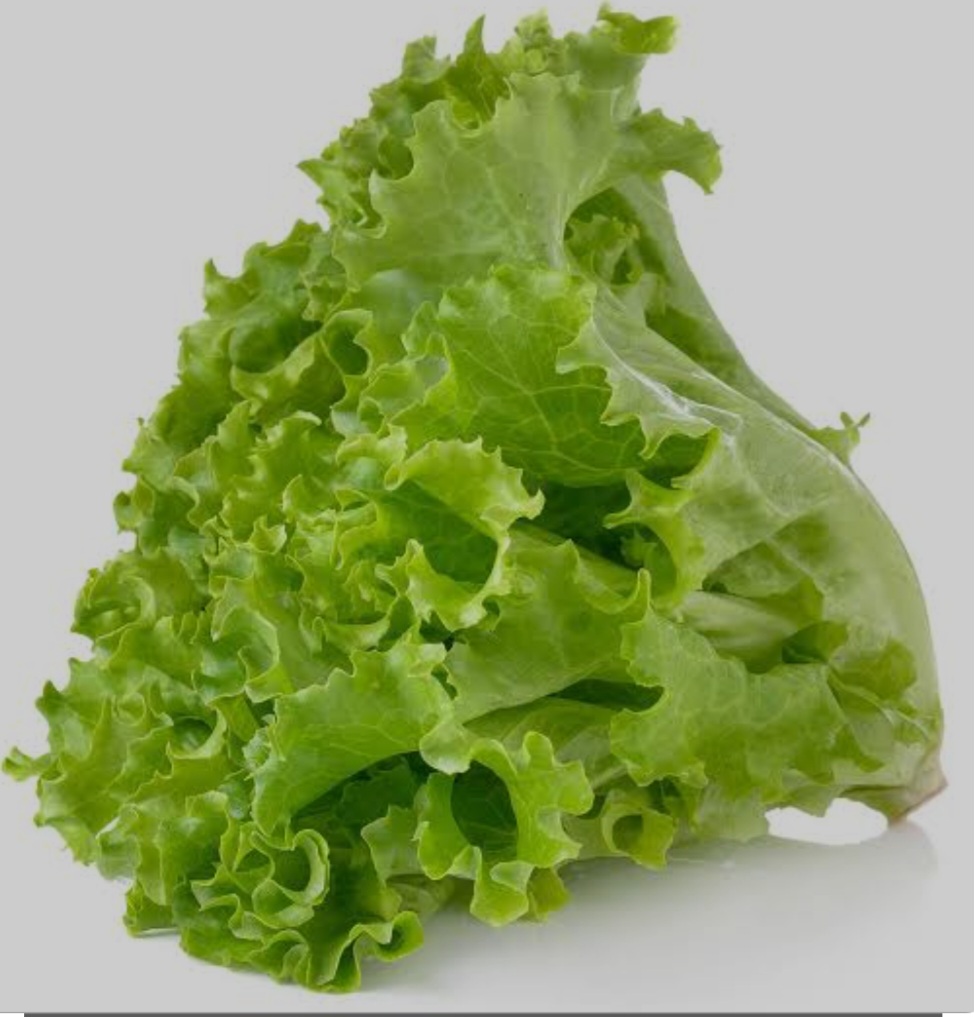
Lettuce ( Lactuca species) is a plant with an ancient history. It’s origin appears to have been in Asia Minor. The name lettuce is possibly derived from the wide spread weed name, Lettuce serriola, L. which is indigenous to Western Asia.There are four species of Lettuce ( Lactuca sativa, Lactuca serriola, Lactuca virosa and Lactuca saligua). BOTANY OF LETTUCE. Lettuce belong to the family Asteraceae. It differs from most vegetables because it is neither biennial nor self fertile. It is often defined as an annual glamorous herb. It can produce flowers and seeds in tropical condition. Lettuce varieties are pure lines. The seeds are black or white depending on the variety. They are quite small, 800-1000 seeds/g. Lettuce has a diploma chromosome number of 2n=18. VARIETIES OF LETTUCE. There are two major varieties of lettuce: The heading lettuce variety and non-heading variety. The heading variety forms a compacted head like a cabbage while the non-heading one has loose leaves.
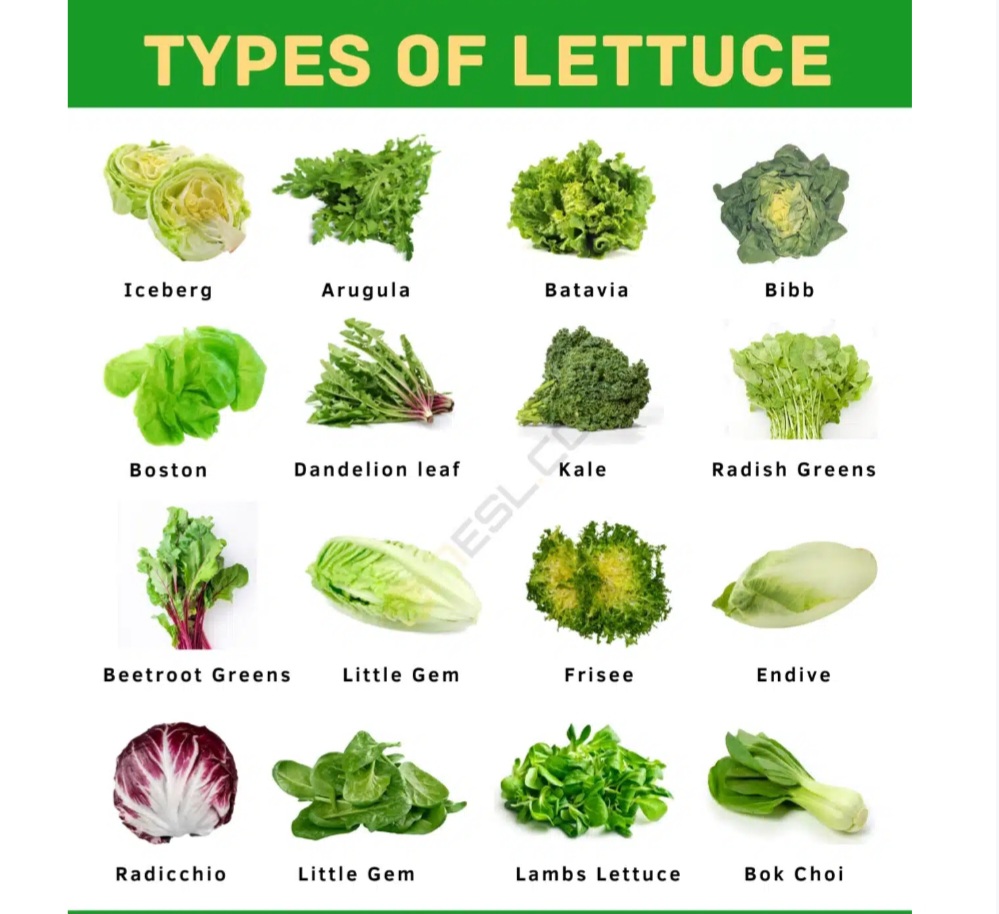
CHARACTERISTICS OF LETTUCE VARIETIES GROWN IN WEST AFRICA. 1. CABBAGE OR HEAD LETTUCE ( var. capitata): It has compact rosette of leaves which forms a solid head. The leaves are broad and the mid rib branches into small veins. 2. COS OR ROMAINE LETTUCE ( var. longifolia): It has upright leaves which are oblong and coarse in nature. It’s mid ribs are prominent. Most of the leaves are self folding forming loose heads. The outer leaves are darker green and the inner leaves are smaller and lighter in colour with interior leaves nearly absent of chlorophyll. Other lettuce in other parts of the world include: 3. CHINESE LETTUCE/CELTUCE: It forms long, tapering, non-head forming leaves and has strong-flavoured tuff of terminal leaves. 4. SUMMER CRISP: forms moderately dense heads with a crunchy texture. The variety is intermediate between crisp-head and loose-leaf varieties. Other types of Lettuce include: Butterbean, head Lettuce and stem Lettuce. THE INFLORESCENCE/ FLOWER: The inflorescence is head of capitulum consisting of a large number of flowers. Numerous small flowers remain close together on a receptacle. Florets has a single ligulate, yellow petals, five stamens and two carpels. There is very high degree of self pollination. Pollen and ovule are usually highly fertile. Anthesis starts at sunshine and flower fully opened by late morning. Pollination takes place in the morning. THE LEAVES, STEMS AND ROOTS. Lettuce has a thin tap root with fibrous lateral branches. The stem is erect, 30-100cm tall and cylindrical, containing latex vessel, up to 10cm in most cultivars. The leaves are almost sessile, arranged spiraled in rosettes or head, variable in size and form with 10-22cm in lenght. The shape is oblong to transverse elliptic, orbicular to triangular, undivided to pinnatisact. It has pentamerous yellow flower which has densely clustered ligulate and hermaphrodite. The anther is connate stigma. Seeds are oval in shape with 3-4mm in length, ribbed, hairy at one end. Also, with white, yellow, grey or brown poppa of silky hairs. AGRONOMY OF LETTUCE. a. PROPAGATION AND PLANTING: Propagation is from seeds which germinate within a period of b 4-5 daysfrom sowing. The seed rate is about 1.5kg/hectare, but is sometimes as high as 3kg. Sowing depth varies between 10 to 15mm. The Optimum germination temperature required for Lettuce germination is 25oC. Above this temperature, germination percentage falls rapidly. Lettuce is mostly grown in temperate countries, however, some varieties have been developed from propagation in the hot climate.
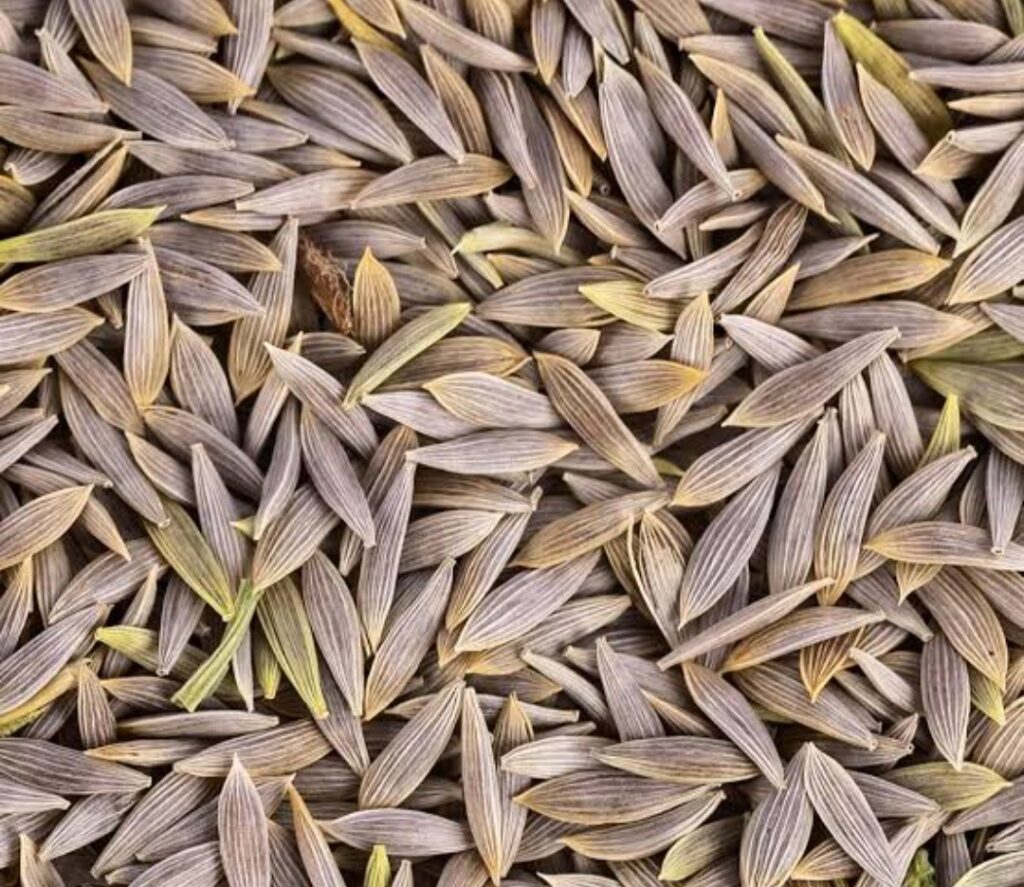
b. NURSERY: Lettuce is usually raised in the nursery or container beds and transplanted when 4-6 weeks old. The seedlings are usually transplanted with a ball of earth or with roots exposed. Seedlings are usually exposed to outside condition 2-3 days before transplanting. They need slight shade to start with and must be watered regularly until harvest. However, care must be taken not to overwater the plant to prevent disease outbreak.
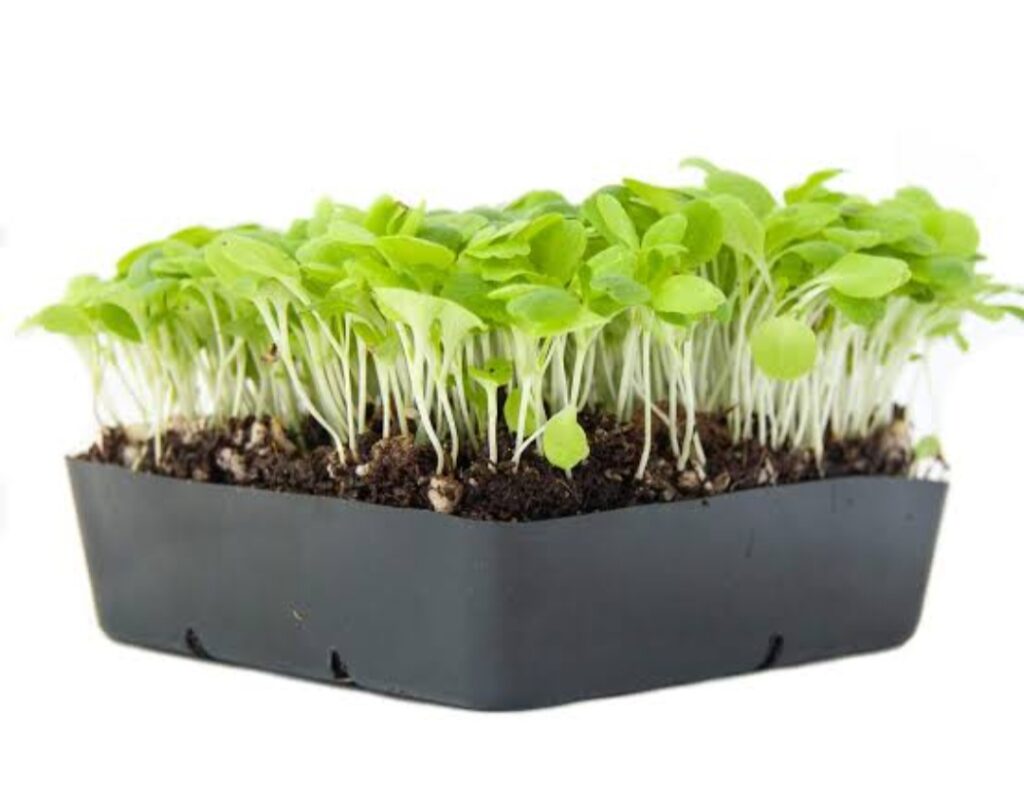
c. SPACING: Spacing and plant popuations can have a marked effect on total yield and on head size. However, as the inter-plant competition increases with higher density planting, head size becomes smaller. Head size is an important quality factor with the large heads normally commanding the higher prices. Planting spacing vary from about 25cm by 35cm or 35cm by 45cm apart. The plant populations vary from about 60,000 to 100,000 plants/hectare. d. CLIMATIC REQUIREMENT: Lettuce is a cool season crop and requires similar climate as that of cool crops. It thrives well in a relatively cool growing season with monthly mean temperature of 12.8oC to 15.6oC. Very low and high temperatures are harmful for germination. Seeds tend to loose their viability very rapidly in the tropics due to the high temperature and humidity. Seedlings emerge within 2 to 7 days at soil temperature of between 10oC to 30oC, above which, the seed is subjected to a temperature induced dormancy period.Dry condition can cause the plant to go to seed. This process is called bolting. e. SOIL AND FERTILIZER REQUIREMENT: Lettuce grow well in light, well manure, well drained soil with adequate watering. It is slightly tolerant to acidic soil (pH of 6.0-6.8), but highly susceptible to high acidic soils. Although, fertile soils are desirable, supplemental fertilization allows reduction on less fertile soils. Soils with high water holding capacity and good drainage are important for good growth and plant performance. For good output, the soil should be rich in nutrients and of loose loamy soil and must not be waterlogged. Lettuce has a relatively high water requirement. Frequent light watering makes the leaves to develop rapidly, resulting in high quality lettuce. Overwatering especially in heavy soils, can lead to diseases, soft growth and scalding or burning of the leaf margine. Insufficient moisture can cause failure of seeds to germinate. Soil moisture shortage will seriously stunt the growth and head quality. Irrigation greatly reduce the risk of crop failure. An organic mulch for new transplant is prefered to plastic mulch. Organic mulch can help moderate soil temperature and the micro environment to produce quality lettuce in less than ideal weather condition. Different fertilizers are given for different soils, areas and varieties. A good fertilizer respones is obtained with a top dressing of nitrogenous fertilizerLettuce is a moderately heavy consumer of nutrients. For most situations, a recommendation of 100 – 200kg/ hectare of Nitrogen is sufficient with a portion applied prior to planting and other portion as side dressing. Phosphate encourages the production of firm heads. During crop development, about 60 – 100kg/ hectare of P2O5 and a similar quantity of K2O is required. For mineral soil, a suggested rate of 110kg N/hectare would give good yield. In situations where soil phosphorus and potassium are high, 226 -326 kg of NPK 10:20:20 equivalent per acre is adequate. When lettuce is grown on degraded soils like desert soils, a recommendation of 78 – 136 kg of Nitrogen per acre is recommended from optimum yield. The actual rate to apply will depend on soil texture, residual soil Nitrogen, irrigation and rainfall. NUTRIENT COMPOSITION OF LETTUCE. Lettuce is a good source of various nutrients needed by human body to promote growth and development. Lettuce is normally used in raw state in salads and also as cooked vegetables. Loose headed form has a higher amount of vitamin A. Lettuce is a good source of potassium for human health. other nutrients include silicon and cobalt. All lettuce are low in calories and most of them are rich in calcium, iron and vitamin C. It should be noted that the darker leaf colour are rich in nutrients. All lettuce is a good source of vitamin A, chlorophyll and chlorine. Romaine lettuce is the most nutrient dense among all lettuce and it is an excellent source of vitamin A, B1, B2 and C. It is a rich source of the B-complex group of vitamins like thiamin, vitamin B-6 and riboflavins. It is also rich source of vitamin k which has a potential role in the bone metabolism.The stem and leaves of lettuce and its wild relatives contain milky liquid called latex. The latex contain two substances called sesquiterpene and lactones which are active ingredients used in some western European countries as a sedative and a sleeping inducer respectively. Certain proteins in lettuce like lipoxygenase and carrageenan help in controlling inflammation. It helps with insomnia (has Lactucarium which has relaxing and sleep inducing properties)It contains zeaxanthin, an important dietary carotenoid.It is rich in fiber and celluloseThe latex of lettuce has antimicrobial properties that completely deform yeasts using terpenes and cardenolides and enzymes like glucanases. Lettuce has anti-cancer properties.In folk medicine, additional uses of Lettuce extracts include: treatment for cough, nervousness, tension, pain, rheumatism, and even insanity. Th efficiency of this treatment is not well documented buy some of these effects have being shown in mice and toad.
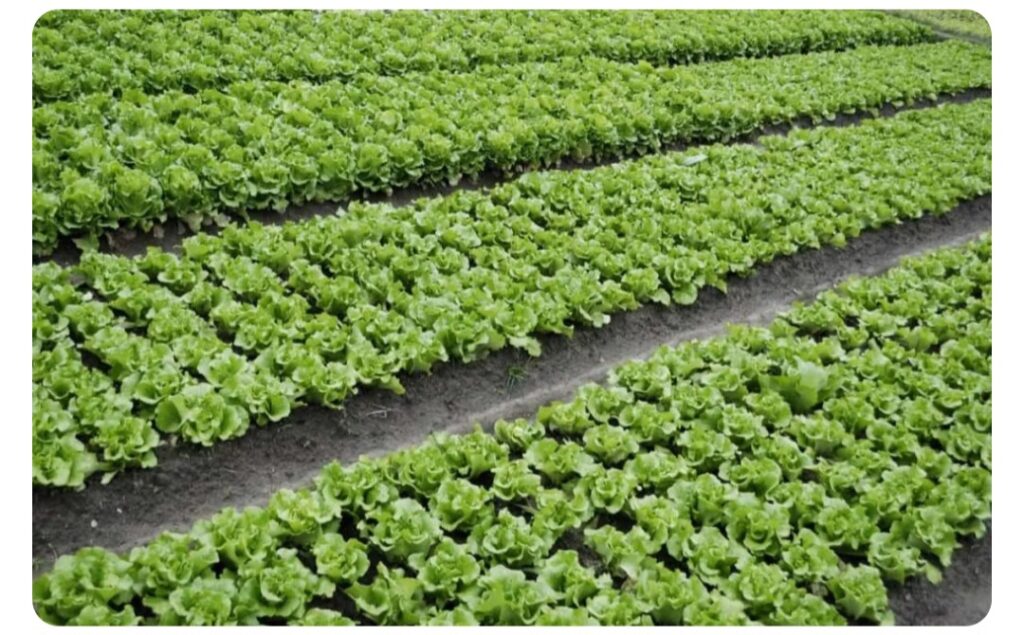
HARVEST, YIELD AND STORAGE. Harvesting of Lettuce depend on the type and purpose for which it is grown. Head Lettuce for market is harvested before the head is well developed and leaf lettuce for home use at any time. For market, lettuce is allowed to develop to a full size.If lettuce is left in the ground for too long, it begins to form a seed stalk, a process known as bolting, and the lettuce leaves will have turned bitter.Yield of lettuce varies due to climatic condition, soil type and type of cultivar. In India condition, the average yield varies from 100-400kg/ hectare.Lettuce can be stored for a period of 3-4 weeks under refrigeration. For storage, it is packed and placed for cold storage at about 0oC ( 32oF) and about 90-95% relative humidity. The freshness of the lettuce is maintained with the preharvest and postharvest treatments. PESTS AND DISEASES OF LETTUCE. PESTS: Important insect pests of Lettuce include: 1. APHIDS: They feed on plant sap and reduce leaf vigour. Aphids may also act as vector of Lettuce mosaic virus.
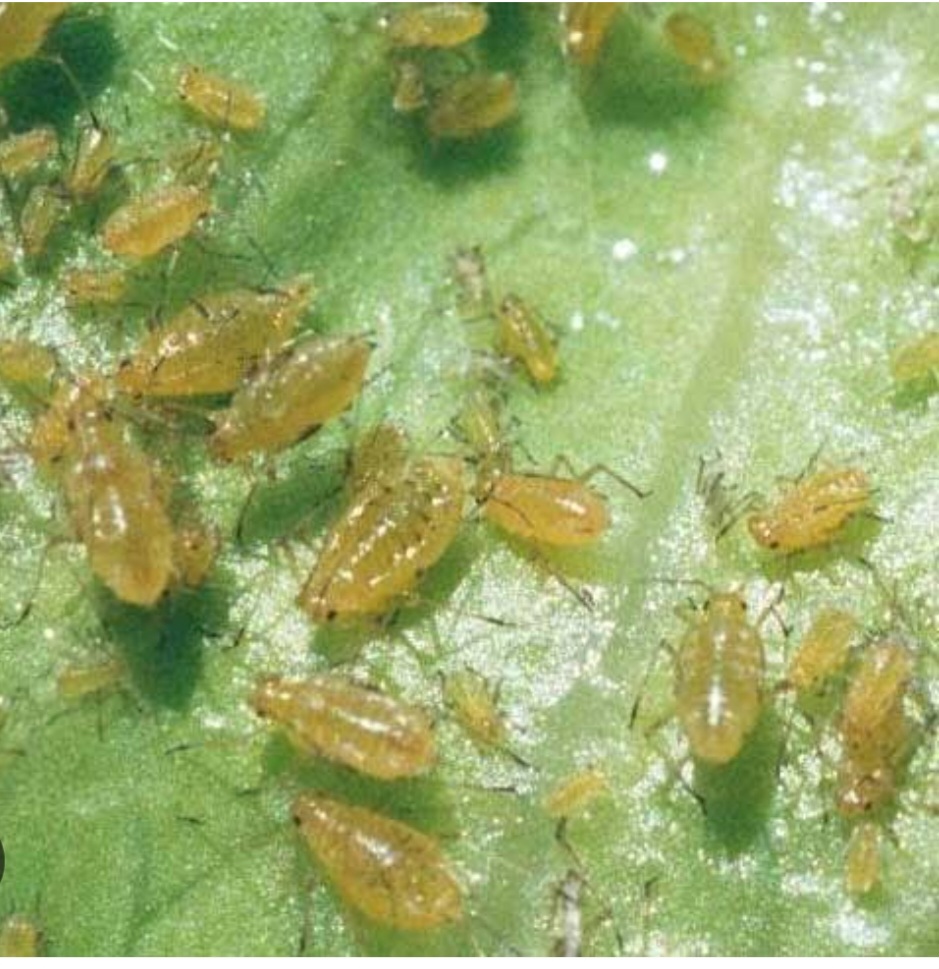
2. BEET ARMYWORM ( CATERPILLARS): They feed on the green portion of the foliage leaving a transparent cuticle on the leaf. 3. NEMATODES: Such nematodes like sting, stubby roots, and Melodogyne species attack lettuce. They feed on the roots of Lettuce plants. When the roots are attacked, symptoms shown on the foliage include stuntness, wilting, leaf yellowing and delayed maturity. Infected roots develop gull like swelling.Other pests include whitefly. thrips, leafhoppers and mites. 4. CUTWORMS; These are problematic mostly during the seedling stage and are found 2-5cm below the soil surface. Cutworms are active during the night and they cut stems just above or below the soil surface. 5. DIAMOND BACK MOTH (DBM); The larva is a green caterpillar which feeds on the leaf tissue except the veins. Infestation causes significant losses if the pest is not controlled. 6. AMERICAN BOLLWORM; The larvae penetrate at the bottom of the leaves and eat their way into the heads.
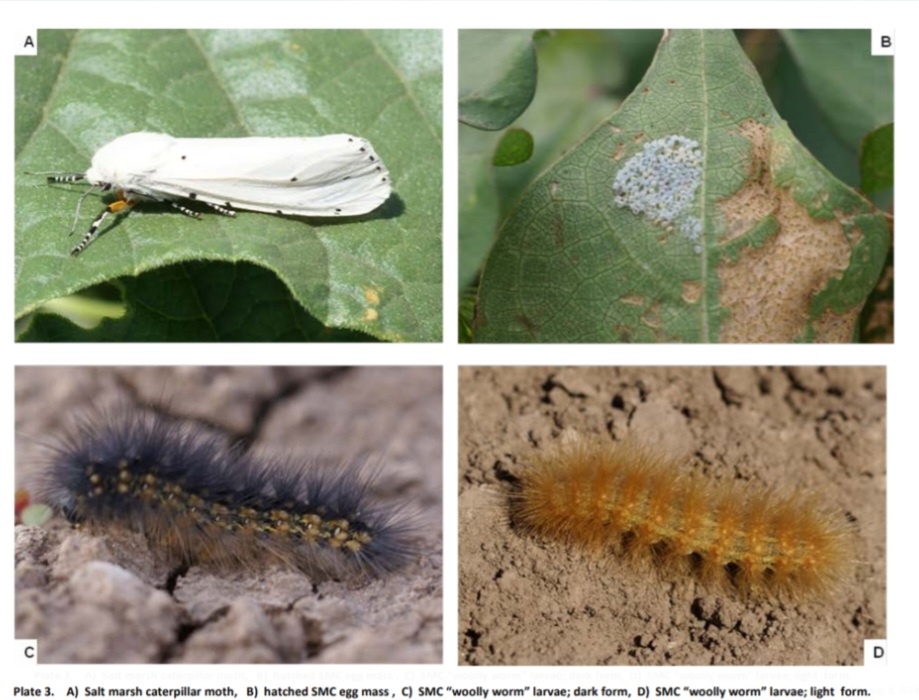
DISEASES OF LETTUCE. The disease affecting lettuce include: 1. LETTUCE MOSAIC VIRUS : It is an important viral disease worldwide. It is seed borne in lettuce and caused by aphids. etc.
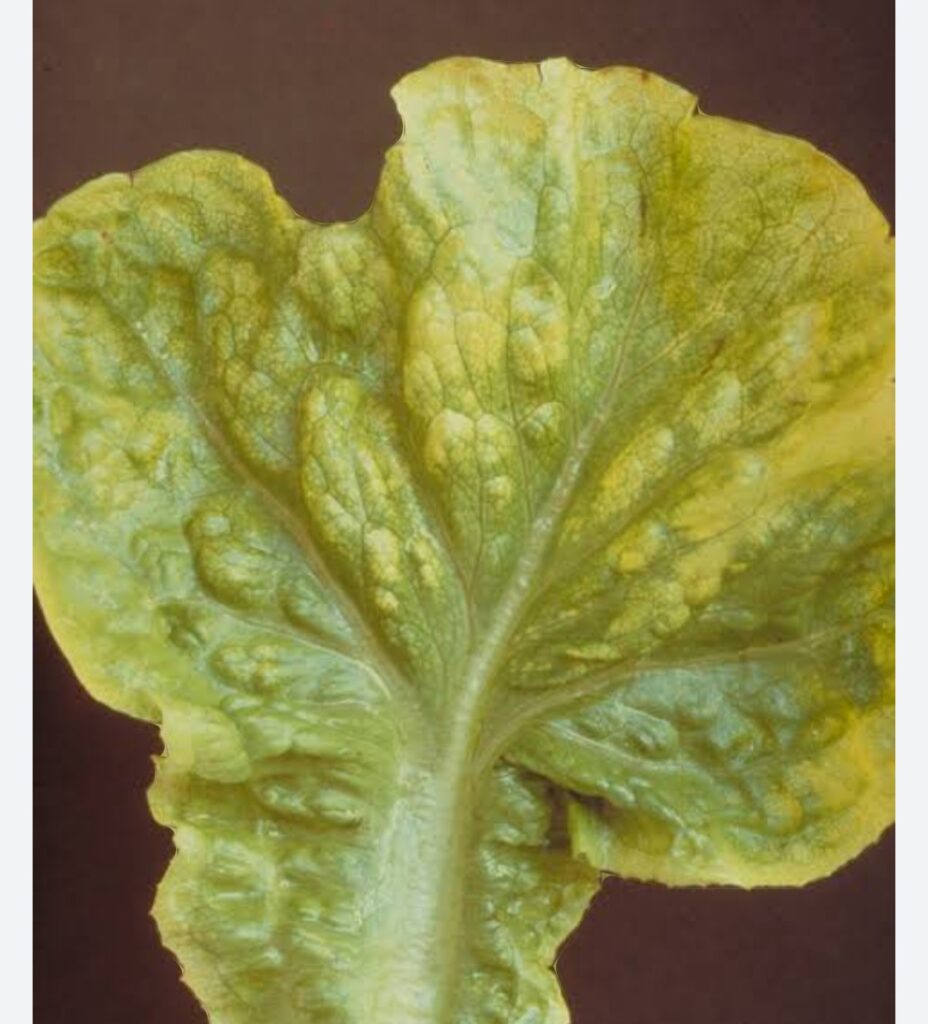
2. DAMPING OFF: Rhizoctonia solani phythium species): This is a soil borne disease which attacks seeds and seedlings. Diseased seeds do not emerge while seedlings rot and eventually die. The roots of these infected seedlings exhibit a white cottony growth. 3. DOWNEY MILDEW; It is characterized by light green to yellow areas on the upper surface of the leaf. As the disease progresses, the infected tissues turn brown and a white downey mold also forms on the lower leaf surface.
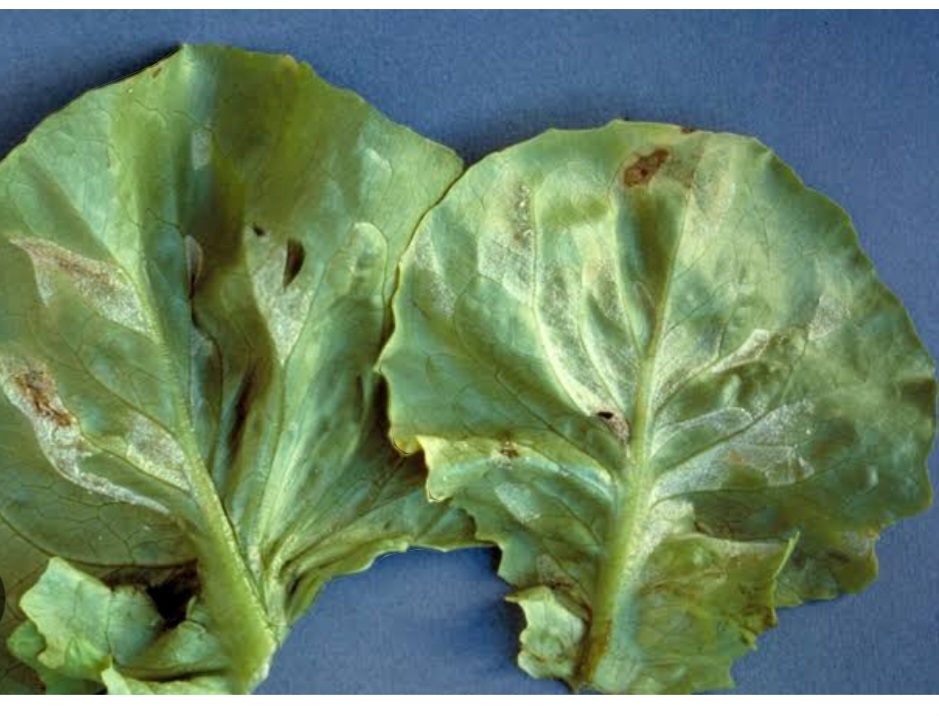
4. BACTERIA LEAF SPOTS: Infected plants have small, yellowish spots on the outer leaves. These spots grow and become large, irregular and brown. The centre of the spot is pale creamy brown with many black dots. 5. POWDERY MILDEW; This disease occurs frequently and it reduces the quality of the crop. Infection symptoms are characterized by spots or patches of white to greyish, talcum powder like growth. Tiny pinhead sized, spherical structures that are first white, later yellow brown and finally black, may be present singly or in groups. 6. SCLEROTINIA ROT; Infected plants initially wilt on hot days. A severe wet rot is seen on the stem near the soil. This rot spreads to the roots and into the head, becoming wet and slimy. A white, cottony mold develops on the rotten tissue and hard, irregular, black sclerotia can also be seen in the white mold on rotten tissues. The outer leaves whither and drop flat, then the inner ones, if the base of the leaf has rotted. 7. BACTERIAL ROT: Disease symptoms include leaf spots which start off under water-soaked conditions and later turn brown, before developing soft leaf rot and death of affected tissue. The disease is favoured by hot and humid weather conditions and the rot can worsen after harvesting, in transit and in the market.8. Bottom rot ( Rhizoctonia solani). It is a fungus infection.
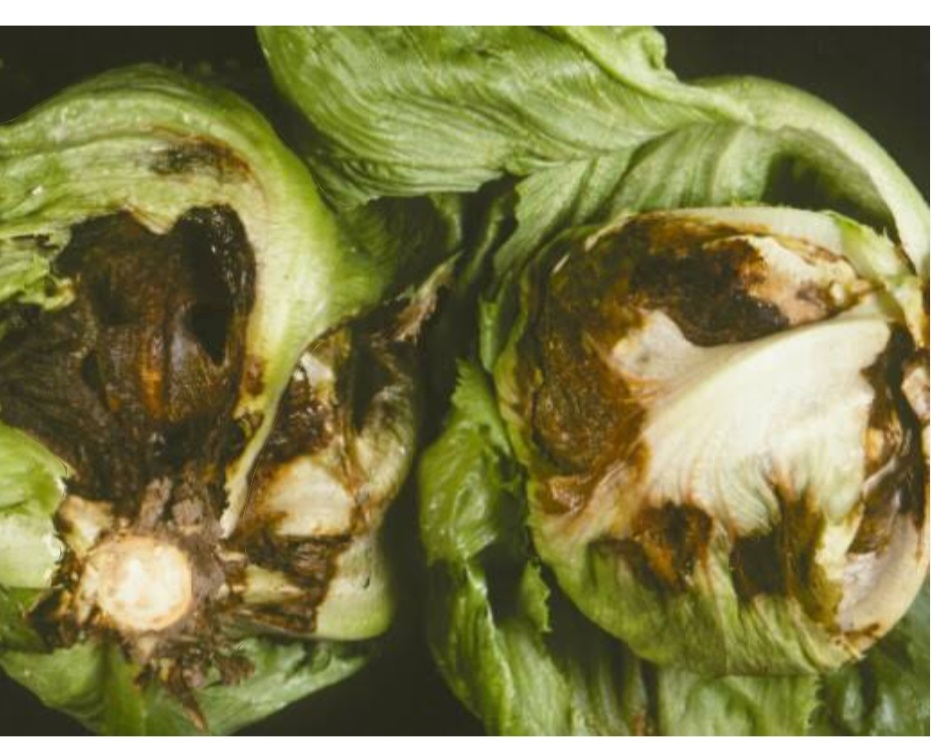
Other diseases of Lettuce include bolting, tipburn which are both physiological disease.
